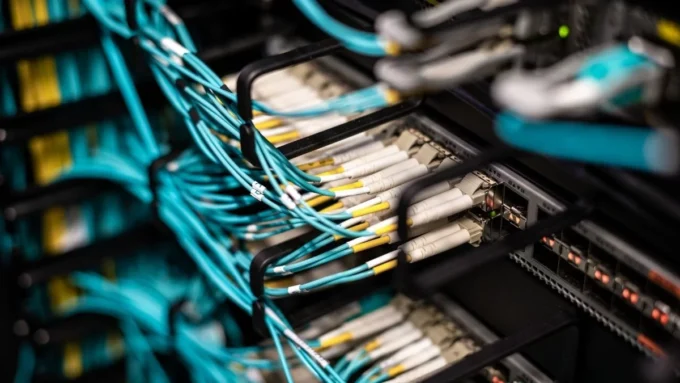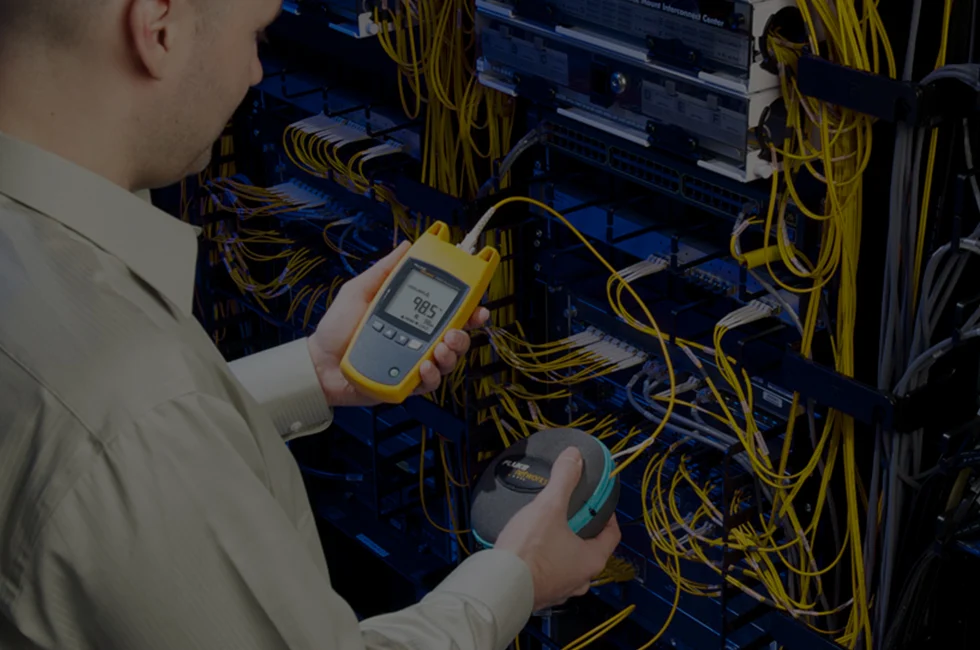Proposal of 10GBASE-T Standard
People’s pursuit of bandwidth is endless. With the popularity of personal computers and the development of office automation, the network has gradually become an important carrier of the core business of enterprises. Improving the network bandwidth, especially the transmission speed of the core layer, has become one of the main bottlenecks restricting the development of the network, including data centers and large enterprises.
For this reason, the IEEE standards committee formally proposed the standard of 10Gbps 10GBASE-T (Click here to get 10GBASE-T optical transceiver)10 Gigabit Ethernet running on four pairs of balanced twisted pair systems on June 8, 2006, with the standard number 802.3an. In order to meet the requirements of new transmission rate improvement, cables and connectors need higher performance; Moreover, compared with Gigabit Ethernet, the performance of signal electrical processing technology will also be improved. Therefore, TIA, LSO and other organizations have also successively launched 100m copper cable standards suitable for 10GBASE-T, such as TSB-155 and TLA / ELA 568B 2-10, ISO11801, TR24750, etc.
Challenge of 10GBASE-T 10 Gigabit Copper Cabling — External Crosstalk
The emergence of 10 Gigabit network standard realizes the upgrading of enterprise transmission bandwidth, but at the same time, it also brings new topics to copper cabling. In the actual use process, it is found that since the signal level becomes lower, the noise source that is not serious in Gigabit Ethernet may become an important problem in 10 Gigabit Ethernet. The noise sources mainly come from two aspects.
First of all, due to the broadening of the frequency band: from 250MHz to 500MHz, the electromagnetic impact between pairs in the same cable will be more obvious. For this part of crosstalk, advanced digital signal processing methods can be used to suppress near end crosstalk, far end crosstalk and return loss through echo technology to reduce it as much as possible.
Another noise source comes from the interference of cables in the same pipeline. Due to the complexity and irregularity of external crosstalk signal, the existing signal processing methods can not effectively suppress it. Therefore, after a series of tests, it is finally confirmed that for 10 Gigabit network, external crosstalk is a main electrical index affecting the performance of 10 Gigabit Ethernet based on structured cabling system.
Test of External Crosstalk of 10 Gigabit Copper Cable System

In view of this, various standardization organizations also put forward specific indicators of external crosstalk in their respective standards, such as TIA / ELA 568B 2-10, etc., so as to ensure the normal operation of 10 Gigabit network system. However, due to the influence of environmental factors, we cannot get the accurate value of external crosstalk in the laboratory or factory test, which can only be obtained through the actual field test. Therefore, how to carry out convenient and effective on-site external crosstalk test is another difficult problem in front of 10 Gigabit network wiring. The following is a brief introduction to the measurement methods of external crosstalk and the main causes and solutions of external crosstalk through the only test model recognized by TIA and ISO international organization for standardization.
In practical work, we find that external crosstalk mainly has the following characteristics: it increases with the increase of the frequency of the transmitted signal; The closer the distance between links, the greater the impact; The wire with the same twist ratio has a greater influence on the cross section; The lower the kink ratio, the greater the influence; The longer the parallel distance between links, the greater the impact. In the same bundle of cables, the cables near the disturbed cables are an interference source, so we need to test the interference generated by each interference source in the actual test. At the same time, we can see that the four pairs of lines of each interference source will have an impact on the interfered line pairs. Therefore, four external crosstalk tests are required for each pair of lines, and one or six external crosstalk tests are required for each interfered link.
If this test is carried out manually, the workload is huge. Even the traditional way of testing each pair of cables separately using a gigabit network is quite time-consuming. However, the most important thing is that the synchronous test cannot be carried out. All tests are scattered, and the state in the actual environment cannot be determined, and the impact of interference on the transmission performance of the actual field wiring link cannot be simulated. Therefore, in QSFPTEK solution, the combination of test software and instrument is adopted to improve the test efficiency, and the impact of simulated interference on the performance of the actual measured link is tested in real time
The host and remote end of the test instrument are respectively connected to the same side of the interfered link and the interference source link, and the remote ends of the two links are balanced through the terminator circuit. The synchronous connection is used to keep the signal clocks of the two devices consistent. When the remote device sends a signal, the host device starts to monitor and record the interference signal generated by the interfered link. Through the automatic control of computer software, the test instrument can automatically complete 16 different interference tests for each link
The actual verification shows that the time to complete 16 tests of each link by this method is about 25 seconds, and the work efficiency is very high. In contrast, the measurement method of external crosstalk at the far end is basically the same, except that at this time, the far end module needs to be moved to the far end and the signal synchronization is realized through the synchronization channel.
Conclusion

To sum up, due to the demand for bandwidth, 10 Gigabit Ethernet has become the next development direction of the network. However, one of the main problems restricting the development of 10 Gigabit network is external crosstalk. Different from the traditional wiring system, the electrical parameters are directly related to the cable itself, and the external crosstalk is more affected by the on-site construction factors such as wiring technology and binding density. Therefore, in order to ensure the normal operation of 10 Gigabit network, strict external crosstalk field test must be carried out. Through the test method recognized by international standards, QSFPTEK can quickly and accurately complete the external Crosstalk Test in the field environment, and even judge the fault location to a certain extent, so as to provide basis for rectification, so as to help realize the smooth upgrading of network bandwidth.






